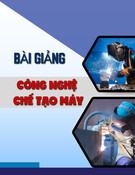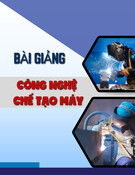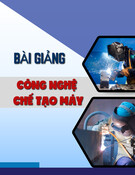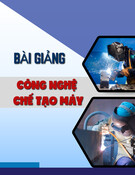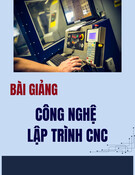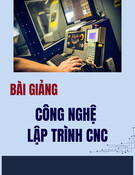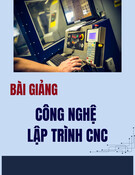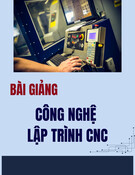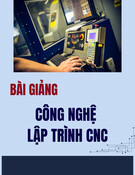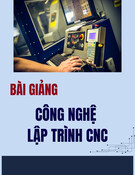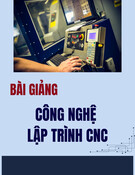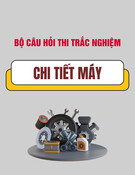
!1
Bộ truyền xích

KHOA CƠ ĐIỆN TỬ
LỊCH SỬ
Chains have been used for
centuries to drive machines and
move materials on conveyors and
up elevators. !
In 225 B.C, Philo described a
chain-driven water lift
2
Standard Handbook of Chains
CAST PINTLE CHAIN
The next important development after cast detachable chain was the cast pintle chain, shown in
Figure 1-9. Pintle chain is the direct ancestor of both standard roller and engineering steel chains.
It has a “closed-barrel” design, heavier link sections, and steel pins or pintles. Pintle chain evolved
from cast detachable chain to withstand heavier loads, higher speeds, and more severe operating
conditions in both drives and conveyors. The original pintle chain design was soon modified to
meet special needs. For example, “shoes” were added to provide greater resistance to sliding wear,
as illustrated by the links shown in Figure 1-10. This design is still widely used today.
Short-pitch pintle chains were used for both drives and conveyors. However, new chains with
a longer pitch were soon developed for conveyors. Not only did the longer pitches give these chains
FIGURE 1-1
Philo’s chain driven water lift.
FIGURE 1-2
Leonardo da Vinci’s sketches of chain.
DK4023_C001.fm Page 2 Wednesday, August 17, 2005 8:57 AM
© 2006 by American Chain Association

KHOA CƠ ĐIỆN TỬ
LỊCH SỬ
•First drawing of chain
during the Renaissance by
Leonardo da Vinci!
•Some of those designs are
remarkably similar to
modern bar link, leaf, and
silent chains.

KHOA CƠ ĐIỆN TỬ
PHÁT TRIỂN
Modern chain development really began in the 1800s. !

KHOA CƠ ĐIỆN TỬ
PHÁT TRIỂN
Roller chain drove the propellers on the Wright Brothers’
first airplane.

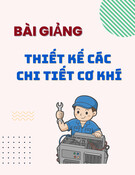
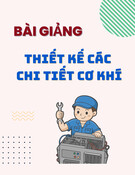








![Bài tập tối ưu trong gia công cắt gọt [kèm lời giải chi tiết]](https://cdn.tailieu.vn/images/document/thumbnail/2025/20251129/dinhd8055/135x160/26351764558606.jpg)
